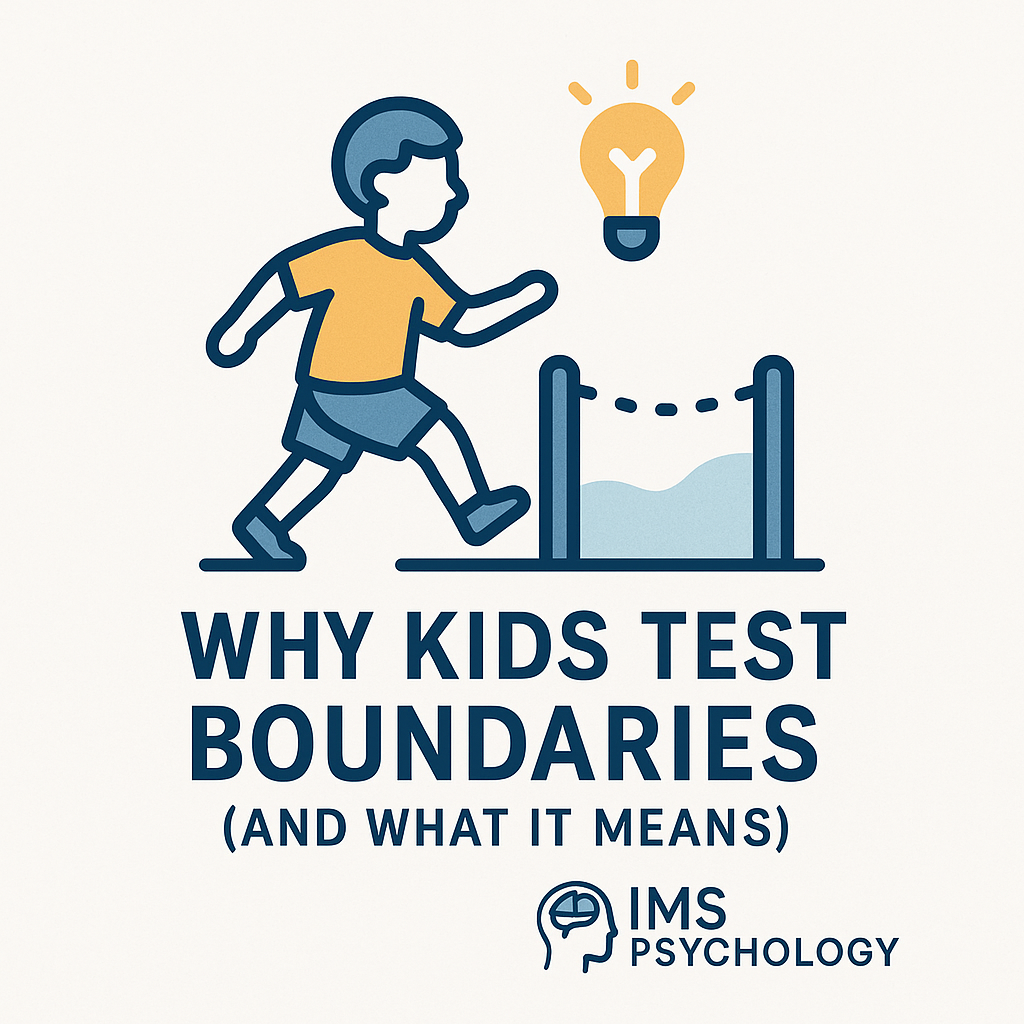
Why Kids Test Boundaries (And What It Means)
Share
Why Kids Test Boundaries (And What It Means)
Learn why kids test boundaries and what it reveals about their development. Understand the psychology behind defiance, safety-seeking, and healthy discipline.
Introduction: When "No" Becomes a Daily Battle
If you're a parent, you've likely heard it: "You can’t make me!" or "But why?" repeated endlessly. While frustrating, this behavior isn’t a sign of disobedience gone wrong — it’s often a sign of emotional and cognitive growth.
Testing boundaries is a normal — and even healthy — part of childhood development. From toddlers to teens, children push limits not just to rebel, but to understand themselves, their environment, and your role in keeping them safe.
Let’s explore the psychology behind boundary-testing, what it really means, and how to respond in ways that build emotional intelligence, not power struggles.
Why Children Test Boundaries: Psychological Foundations
1. Seeking Safety Through Structure
Paradoxically, when kids test boundaries, they’re not looking for freedom — they’re often searching for structure.
-
Clear, consistent limits communicate “you are safe, and I am here.”
-
Unpredictable rules or inconsistent reactions make the world feel uncertain.
-
Healthy boundaries help kids internalize a sense of order and self-regulation.
2. Developing Autonomy
According to Erik Erikson’s stages of psychosocial development, children move from dependence to independence by exploring their environment and testing limits.
-
A toddler throwing food is learning cause and effect.
-
A teenager staying out late is grappling with autonomy vs. trust.
-
Pushing boundaries is a way to understand where “I” end and “you” begin.
3. Exploring Power & Control
Kids don’t always have language for their needs or emotions. Sometimes they push back simply to feel a sense of agency.
-
“No!” might mean “I need to feel in control of something today.”
-
This is especially true for children experiencing stress, transitions, or uncertainty.
4. Mirroring & Social Learning
Children observe adult behavior and mirror it back — testing whether the boundaries you set are also ones you follow.
-
Inconsistent reactions teach them to “test again.”
-
Calm, firm limits model emotional regulation and leadership.
What Boundary Testing Doesn’t Mean
-
It does not mean your child is manipulative.
-
It does not mean you're failing as a parent.
-
It does not mean something is wrong with your child.
Instead, it often signals healthy developmental progress, even if it shows up as defiance, whining, or negotiation.
How to Respond with Psychology-Backed Confidence
✅ 1. Stay Consistent with Calm Boundaries
Children thrive on repetition. Consistency builds trust.
-
Use short, predictable phrases: “We don’t hit. I won’t let you hurt me.”
-
Avoid long lectures — the brain hears tone and emotion more than logic in stress moments.
✅ 2. Validate the Emotion, Hold the Limit
Emotionally intelligent discipline says: “All feelings are allowed. Not all behaviors are.”
-
Example: “I hear you're angry. It's okay to feel that way. But it's not okay to scream at your sister.”
✅ 3. Offer Limited, Empowering Choices
Give kids agency within the structure.
-
“Do you want to brush your teeth before or after pajamas?”
-
“You can choose between these two snacks.”
This reduces power struggles while still affirming the boundary.
✅ 4. Use Natural & Logical Consequences
Let real-life outcomes teach without shaming.
-
“If you forget your homework, the teacher may not accept it.”
-
“If you throw the toy, I’ll need to put it away until you’re calm.”
✅ 5. Reflect on What’s Underneath
Sometimes the boundary-testing signals something deeper:
-
Emotional needs (connection, attention, control).
-
Unmet sensory or physical needs (hunger, fatigue).
-
Reaction to recent changes (new sibling, school stress, etc.).
Developmental Examples: Age-Specific Boundary Testing
Toddlers (1–3 years)
-
Explore independence, say “no” frequently, test physical and verbal limits.
-
Strategy: Stay calm, repeat boundaries gently, redirect often.
Preschoolers (4–6 years)
-
Begin to understand cause and consequence, but still impulsive.
-
Strategy: Use simple choices, model empathy, practice consistency.
School-Age (7–12 years)
-
Push limits through negotiation, testing logic, or social comparison.
-
Strategy: Involve them in rule-setting, acknowledge reasoning, reinforce mutual respect.
Teens (13–18 years)
-
Assert autonomy, challenge authority, test emotional boundaries.
-
Strategy: Shift toward collaborative boundaries, hold space for their voice, maintain connection.
Conclusion: Testing Boundaries Is a Developmental Conversation
When kids test boundaries, they’re not being “bad” — they’re communicating. They’re learning:
-
What happens when I speak up?
-
Can I trust your response?
-
Am I safe to explore, grow, and be imperfect here?
Your calm, consistent, and emotionally intelligent response sends a powerful message:
“You’re allowed to feel, but I will hold the line. I’m your safe base.”
written by,
Martin Rekowski (29.09.2025)
-
External link suggestion: APA – Positive Parenting Strategies
- https://www.apa.org/search?query=Positive%20Parenting%20Strategies